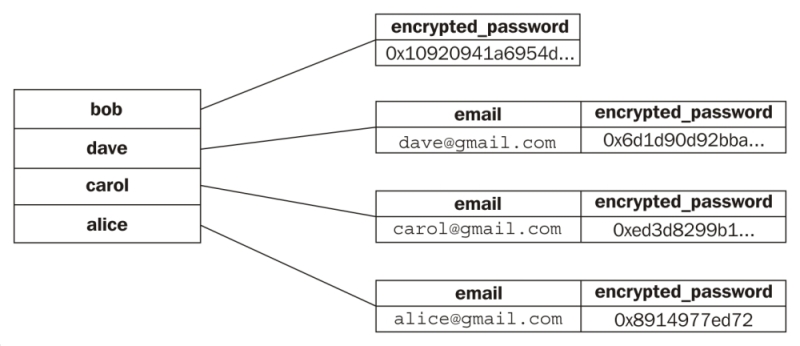Developing a mental model for Cassandra
Any time you learn a new tool, you will naturally begin to develop a mental model for how that tool works. So far, our model for how Cassandra tables works is fairly simple; we will expand upon it throughout the book.
For now, we can think of a Cassandra table as a collection of keys, each of which points to a row. Each row contains data in some subset of its columns.
We also know that, at least in the users table, rows are stored non-contiguously; accessing each row requires Cassandra to seek a different place in storage. So we may imagine the current state of our users table to look something like this:

Essentially, ...
Get Learning Apache Cassandra now with the O’Reilly learning platform.
O’Reilly members experience books, live events, courses curated by job role, and more from O’Reilly and nearly 200 top publishers.

